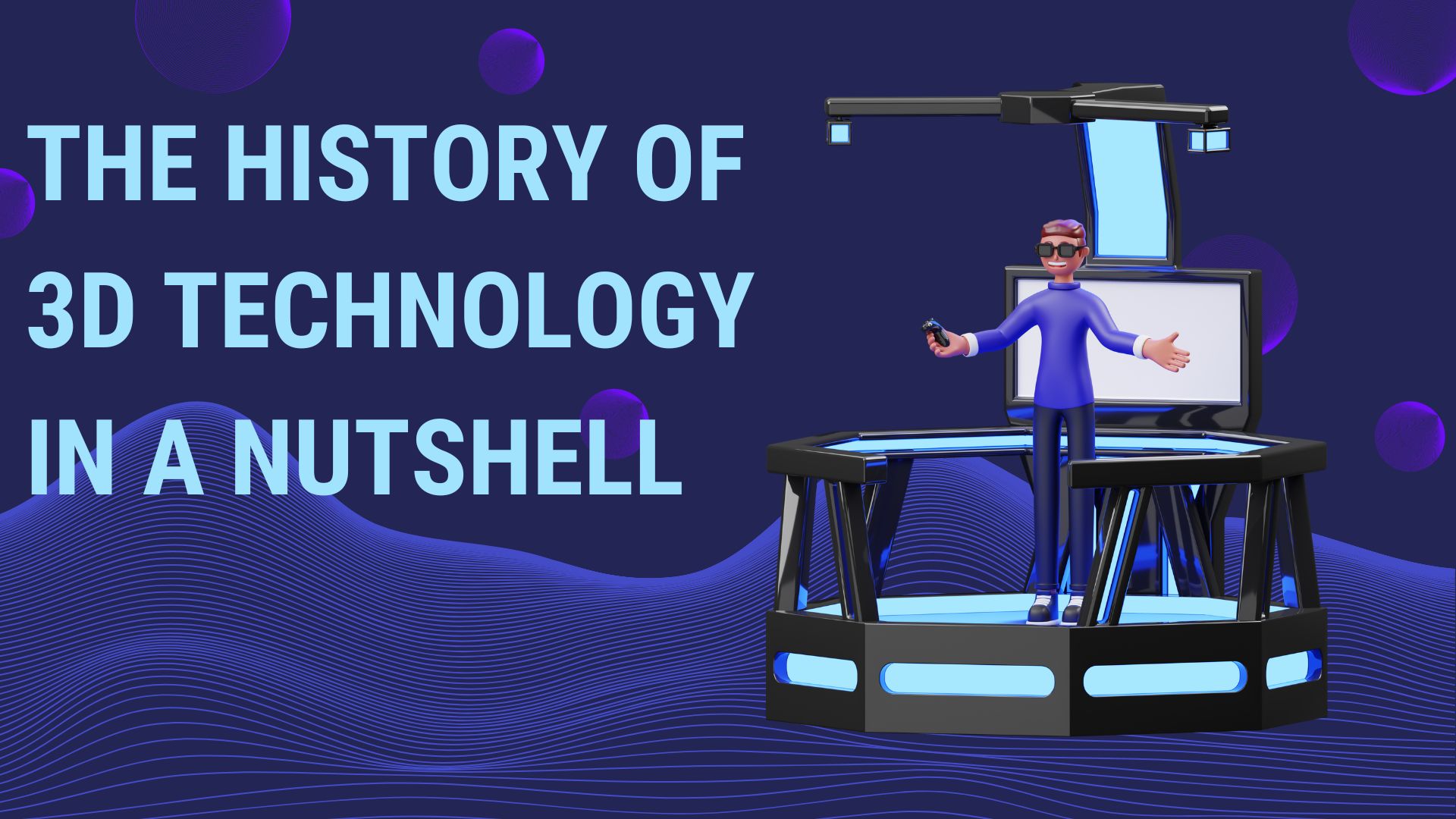Curious about 3D printing and how we got where we are today? It’s been quite a journey since the 2010s! The availability of 3D printing technology for hobby use has attracted tons of interest from the general public and the media, who often consider it a relatively recent invention… but actually, the history of 3D printing is a whole lot longer than you might think.
The origins of this technology go back as far as the 1970s, although it was significantly more primitive than the evolution of 3D printing we are looking at today, and was not yet known under its current name. In this article, we retrace the key moments that led to the development of the different techniques currently used for manufacturing and prototyping in a variety of industries.
Early attempts at three-dimensional printing
In 1945, visionary science-fiction writer Murray Leinster described (in Things Pass By) the process of creating objects by extruding plastic in a vacuum, with a mechanical arm following drawings scanned by photocells.
Leinster imagined that this method would be able to eliminate machines due to its exceptional accuracy, and predicted that it could even make ships and houses! At that time, there was no such method yet, but the insight was not so far from what would happen later - and what a vision he had! However, it took another 30 years or so to have the first real experiments in additive manufacturing. That came in 1971, when Johannes F. Gottwald patented the "Liquid Metal Recorder," an instrument capable of extruding liquid metal and obtaining shapes by layering material following a predetermined pattern.
The Liquid Metal Recorder can be considered the first device for rapid prototyping and the first attempt to expand the field of "printing" beyond ink.
Melting plastic and resolidifying it: Scott Crump
So what came next? Well, Scott Crump was also struggling with the difficulties of prototyping and its timing when he experimented with using a semi-solid plastic while trying to create a toy for his daughter in 1988 (which is kind of sweet). With the help of a hot glue gun, he obtained an object composed of thin layers of molten plastic.
This was how he developed the Fused Deposition Modeling (FDM) system, currently the most widely used in the 3D printing industry - although with significant differences between industrial and hobbyist 3D printers.
In FDM 3D printing, thermoplastic filament is extruded layer by layer on a heated plane until you’ve got the desired shape. After patenting FDM technology in 1989, Scott Crump and his wife Lisa founded their own company, Stratasys, which became a leader in the industry - not really surprising when you consider just how ground-breaking this is!
The spread of 3D printing
The research and development of materials for 3D printing, as well as the refinement of the 3D printers themselves, has caused this technology to be fundamental in the production chain of several industries, thanks to the lowering of costs and production times.
Between the 1990s and early 2000s, several companies began experimenting with additive manufacturing, and 3D CAD software became available to a wider audience; in 2006, the first 3D printer for hobbyist use was released.
At the industrial level, one of the main applications of 3D printing, especially FDM printing, is rapid prototyping, since the high-performance materials available make it possible to immediately verify the performance of models to be tested, and improve designs in progress. Also not to be underestimated is the role that 3D printing plays in the aerospace, automotive, medical, and electronics sectors: components and equipment can be produced quickly, at competitive costs and without any waste, thus benefiting the environment as well.
The advancement of science thanks to 3D printers
3D printing has made unthinkable developments possible in several areas of industry and medicine. In 1999, the Wake Forest Institute for Regenerative Medicine made the first 3D printed organ for transplantation, a human bladder entirely created in the laboratory and capable of decreasing the risk of rejection.
Subsequently, a functional miniature kidney, bionic prostheses, and human blood vessels were also fabricated only from real human cells.
The future of 3D printing: What will happen?
The potential of this technology is… pretty vast. According to the statistics website "Statista," additive manufacturing will enable companies to produce finished objects on a large scale by 2030, with a disruptive effect on the global market.
It will be interesting in the coming years to follow the evolution of "contour crafting," or the technology that allows entire architectural structures to be built with additive manufacturing, such as the 12-meter steel MX3D bridge opened in Amsterdam in 2021. But the future of 3D printing also concerns medicine and the food industry: already in 2015, 3D printing was seeing unthinkable shapes and textures of dough - things that could never be created with manual techniques or traditional machinery.
While it may be surprising that the story of 3D printing did not begin so recently, we’re likely to be even more surprised in the coming years by how much it will succeed in revolutionizing industry and everyday life. With other printing trends changing too, this space looks pretty exciting right now!

















Post Comments